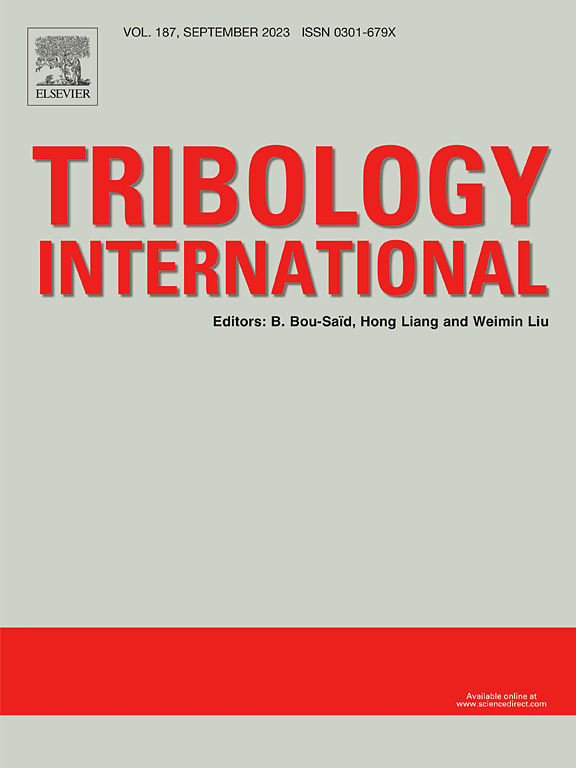Enhanced wear resistance of laser cladded WC-Ni composite coatings by picosecond laser surface texturing
IF 6.1
1区 工程技术
Q1 ENGINEERING, MECHANICAL
引用次数: 0
Abstract
In this work, a picosecond laser was applied to prepare pit textures on laser cladded WC-Ni composite coatings with 20 wt% WC content. The mechanism of laser interaction with the composite phase of the coating was investigated, and the effect of surface texture on tribological behavior and wear resistance was further analyzed. The constituent phases of the textured coating remain essentially the same as the original coating. The presence of WC particles in the WC-Ni composite coating makes the removal mechanism of the composite coating by the picosecond laser consist of thermal ablation of the Ni-based metallic binder phase and phase explosion of the WC particle phase. The hardness of the binder phase region near the texture is enhanced (>500 HV0.2) due to laser thermal effect. The friction coefficient (about 29.24 %) and wear rate (about 53.56 %) were significantly reduced compared to the original coating. It can be attributed to the circular pit texture that traps the abrasive debris and stores the lubricant, indicating that the surface texture plays a positive role in tribological performance.
求助全文
约1分钟内获得全文
求助全文
来源期刊

Tribology International
工程技术-工程:机械
CiteScore
10.10
自引率
16.10%
发文量
627
审稿时长
35 days
期刊介绍:
Tribology is the science of rubbing surfaces and contributes to every facet of our everyday life, from live cell friction to engine lubrication and seismology. As such tribology is truly multidisciplinary and this extraordinary breadth of scientific interest is reflected in the scope of Tribology International.
Tribology International seeks to publish original research papers of the highest scientific quality to provide an archival resource for scientists from all backgrounds. Written contributions are invited reporting experimental and modelling studies both in established areas of tribology and emerging fields. Scientific topics include the physics or chemistry of tribo-surfaces, bio-tribology, surface engineering and materials, contact mechanics, nano-tribology, lubricants and hydrodynamic lubrication.
 求助内容:
求助内容: 应助结果提醒方式:
应助结果提醒方式:


